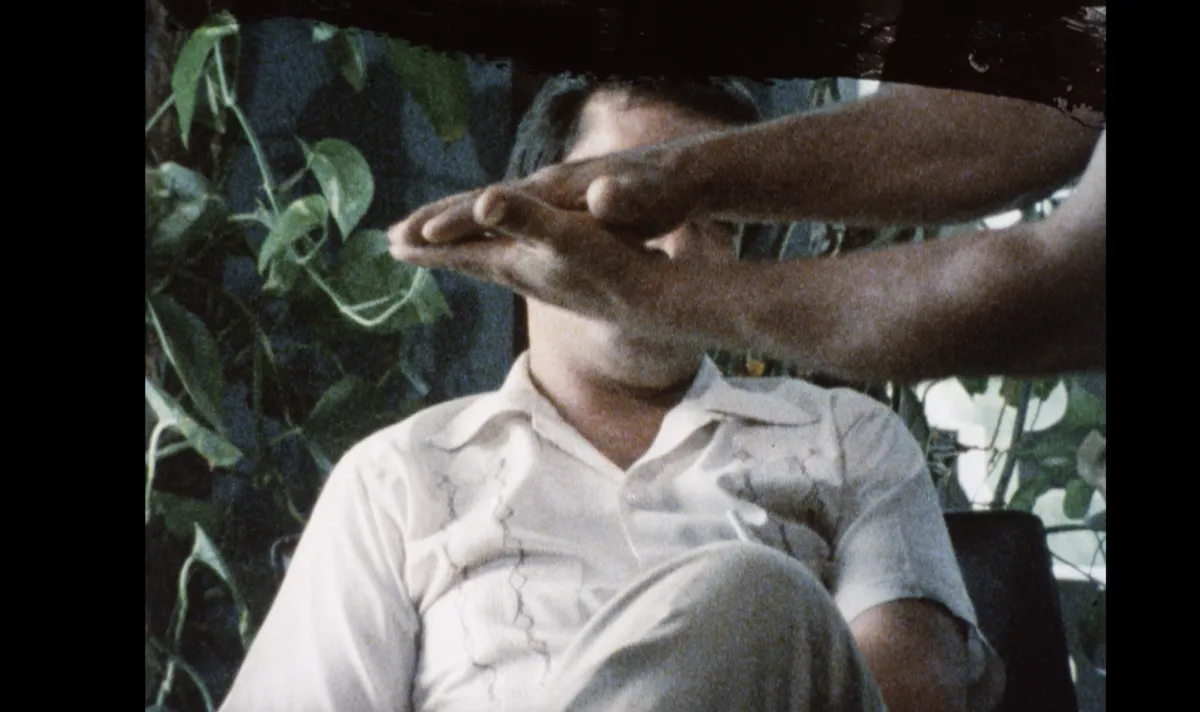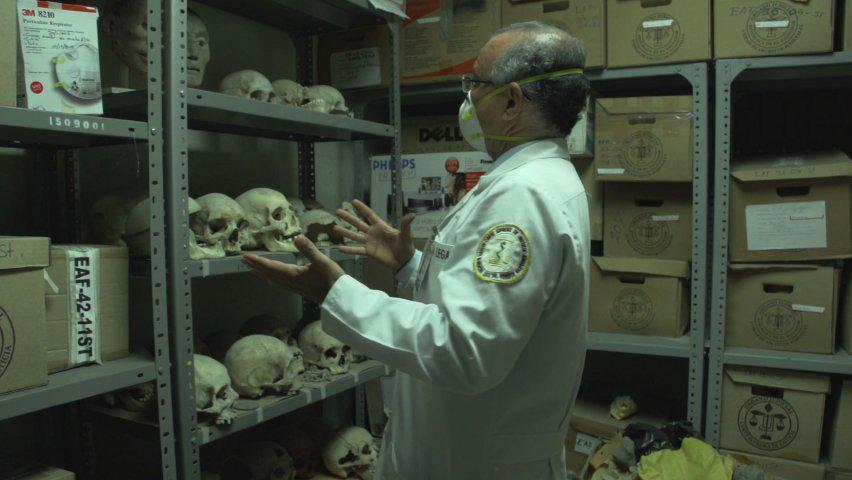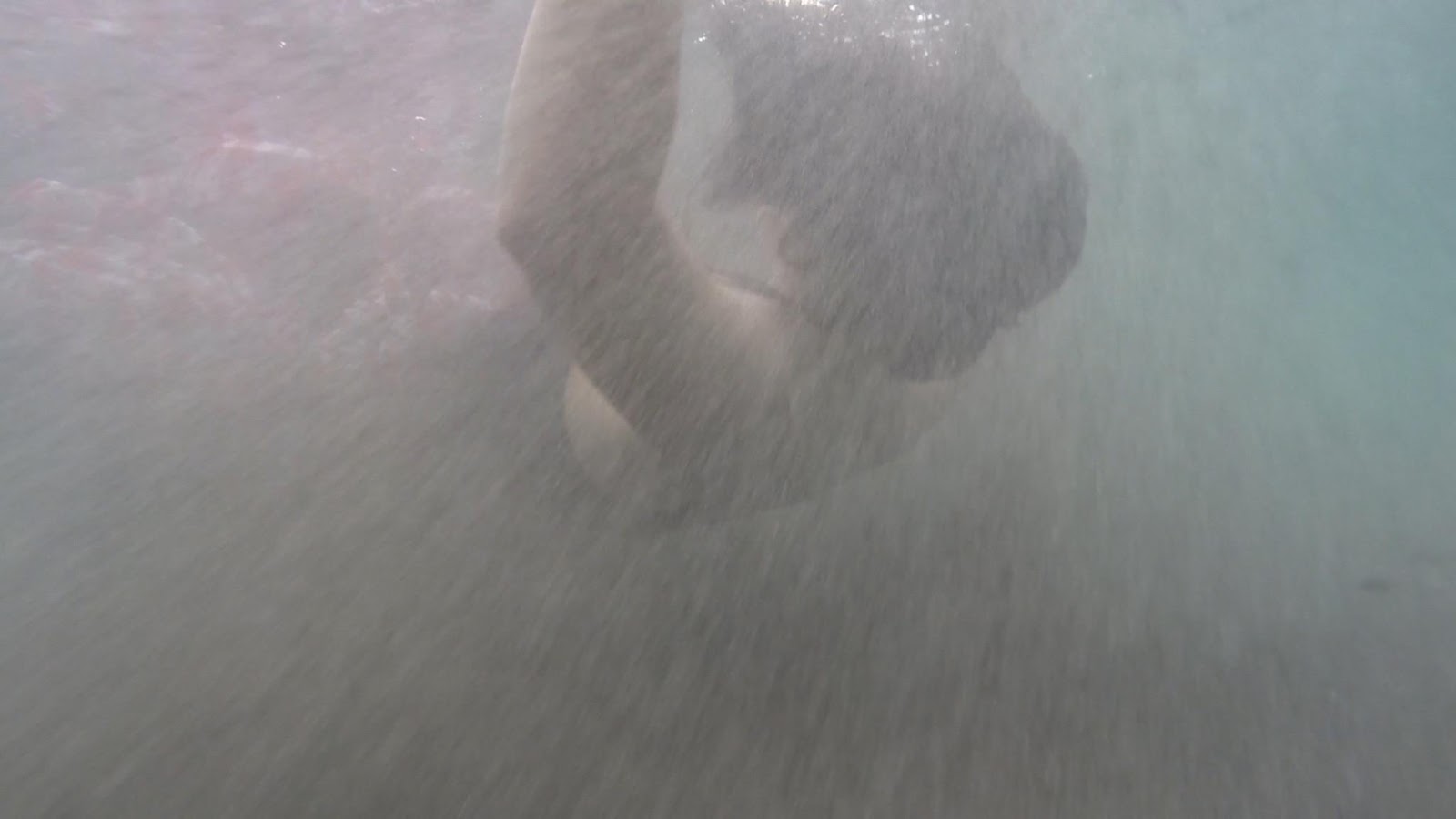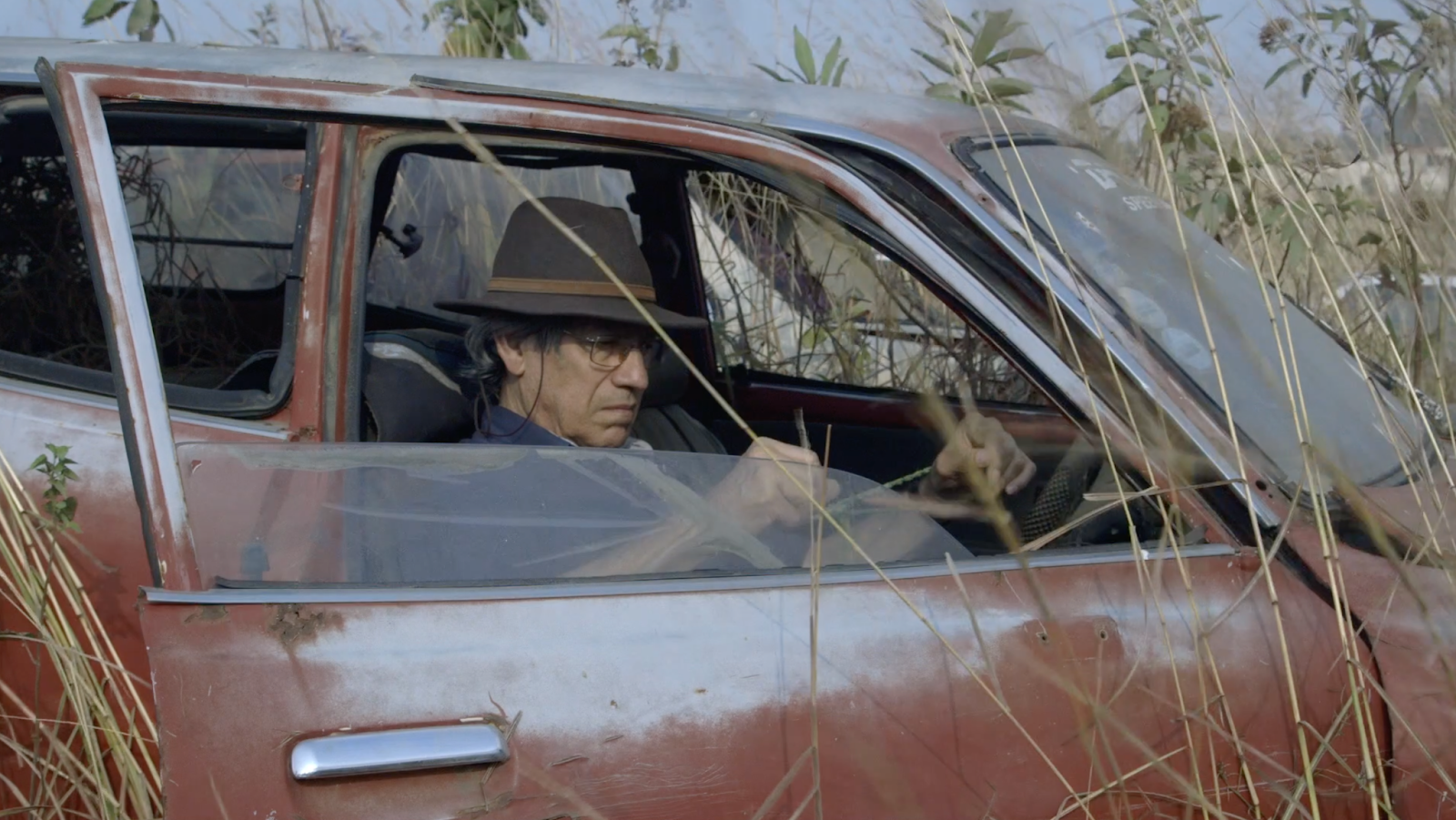
Between Silences and Memory: Spotlighting Three Central American Documentary Directors

Attending the Getting Real conference last year, I was inspired by Nanfu Wang’s keynote and Jessica Beshir’s and Payal Kapadia’s talks in the iconic “Here’s What Really Happened” sessions. I felt a strong resonance with these three filmmakers, especially because of their honesty in revealing knowledge acquired through their own film journeys. There are many parallels between the issues they discussed and documentary filmmaking in my region of the world, Central America. Sometimes I feel that Central America is an incorporeal piece of land, contained between Belize and Panama, floating in the void between South and North Americas. “The waist of America,” as Pablo Neruda once called it, our thin strip of land has been constantly shaken by wars, dictatorships, coups d’état, natural disasters, and extreme violence. From this chaos, our cinematic voice emerges.
Despite the gloomy sociopolitical miasma that invades our isthmus, a constant state of upheaval, the absence of film schools in most of our countries, and scarce audiovisual production resources, we are becoming a focus of powerful cinematic stories of universal interest. Where we live has inevitably shaped our film creations to be more resilient. Over the past decade, we have seen more of our films presented at the most prestigious festivals around the world. Central American cinema is, has been, and will continue to be a true act of resistance.
Continuing the spirit of honesty, this piece features three films, from three women filmmakers, that had a strong impact on my personal journey as a documentary filmmaker. These films have also reverberated deeply internationally, winning prizes at A-list film festivals. Within our Central American region, they spurred historical dialogues in El Salvador, Nicaragua, and Guatemala, where the wounds of wars are usually sealed in a pact of silence. Memory inhabits our bodies, and by opening spaces of dialogue through these films, there is hope of healing the collective trauma of war. I asked each filmmaker three questions that bring readers closer to the core of their films and creative visions.
The interviews have been edited for length and clarity.
The Room of Bones
In El Salvador, the documentary The Room of Bones (2015), by director Marcela Zamora, shows us a deep portrait of El Salvador in the post-war period through the cruel reality of a room full of missing peoples’ bones. This room condenses three Salvadoran tragedies: civil war, migration, and gangs. The memory of these human beings remains alive in the tireless search of their mothers to find them. Supported by Just Films | Ford Foundation and the Mexican Institute of Cinema (IMCINE), the documentary premiered in 2015 at Ambulante, a film festival that tours films across Mexico. In this film, bones take on a new meaning, they become objects of memory that allow a cycle of terror to end. In a masterful way, the film manages to embody the paradox of absence and presence, re-signifying life through human remains.

LAURA BERMÚDEZ, for DOCUMENTARY: Marcela, what is the essence of your film, The Room of Bones?
MARCELA ZAMORA: If I could describe The Room of Bones in an image, it would be a sewer, where all kinds of waste ends up, that human beings do not want to see, smell, or even know that it exists. In the midst of all that rot, a flower is born. That flower represents a mother who receives the bones of her missing son or daughter.
D: What does a movie like The Room of Bones mean for El Salvador?
MZ: It meant pain, fear, and a great discovery. It was not known that there were so many disappearances due to the gang war in our territory. A disappeared person has no legal entity in El Salvador, because it is one of the few countries in the world that has not ratified the United Nations agreement. As the forensic medicine psychologist says in the documentary, “we are walking on mass graves, and we didn’t know.” Since then, and thanks to the joint efforts of various organizations, better working conditions have been achieved for forensic doctors who work in legal medicine, and many changes have been generated in El Salvador.
D: What was the impact on international audiences?
MZ: It’s one of my most awarded documentaries and has been shown around the world. The effect that the film has on audiences is very strong, because when the film ends, nobody applauds. People are left clinging to their armchairs, in a state of shock. The first reaction is silence, the silence that makes us all accomplices. One anecdote with this film: when I was selected at the Ji.hlava International Documentary Film Festival, Viktor Kossakovsky was the only juror. In the middle of the festival, I ran into him walking on a street in the Czech Republic, and when I saw him, I said: “Master! I’m Marcela Zamora, the director of The Room of Bones.” Kossakovsky gave me a big hug, and said, “Thank you, thank you for giving voice to those who are underground.”
Heiress of the Wind
In Nicaragua, with her film Heiress of the Wind (2017), Gloria Carrión Fonseca takes us on a poetic, personal journey through her family’s involvement in the Sandinista revolution in 1979. Supported by the IDFA Bertha Fund, Tribeca TFI Latin America Fund, and Just Films | Ford Foundation, this film had its world premiere at IDFA in 2017. Heiress of the Wind is part of a recent regional filmmaking phenomenon, as one of several recent films from the perspective of the “children of the revolution.” Among them we could also mention The Offended (2016), directed by Marcela Zamora, Asphyxia (2018), directed by the Guatemalan Ana Isabel Bustamante, and Where are you? (2018) from the Costa Rican Maricarmen Merino. It is notable that all these films are directed by daughters of revolutionary activists. In the case of Gloria Carrión, she narrates her film in first person, intertwining memories, dreams, and nightmares of her childhood with archival footage, patriotic hymns, silences, and aquatic atmospheres to immerse us in the symbolic and concrete dimensions of war.

D: Gloria, what was the starting point for making Heiress of the Wind?
GLORIA CARRIÓN: My motivation was, on the one hand, personal—wanting to put together and rebuild the pieces of my history and identity—and, on the other, collective. On a collective level, I was interested in making personal history an excuse to touch on much deeper and more sensitive issues that are still current in Nicaraguan society, such as state violence and the collective consequences of a war that has not yet ended.
D: Could you tell us what it was like to present your film in Nicaragua?
GC: When I presented the film in Nicaragua in 2018, nobody imagined, including me, that just six days later we would be living cyclical experiences of popular rebellion, state violence, and shortly afterward, exile, jail, and political persecution. On the night of its premiere, the film opened a threshold in which the past, present, and future coexisted, and in which the sensitive memories of the past that had been repressed sprouted on the surface, invading the feelings and reactivating knowledge among people, who then felt challenged by the historic moment that began with the massive protests of 2018. In 2021, I was forced to leave my country. Right now, there are about 600,000 Nicaraguans in exile.
D: How do silences and memory cross in your cinema?
GC: Silences and memory are, without a doubt, structuring and vital elements in my work and cinematographic universe. Memory is built from some experiences and memories that are possible to articulate and others that are not. The silences constitute those spaces of memory that nestle in the body, even behind the throat. Experiences and be perhaps unspeakable or difficult to articulate because they are so hard and traumatic. As a documentary filmmaker, I am very interested in exploring the possibilities and also the limits of personal and collective memory, in a region not only plagued by cycles of violence but also made of strength, vitality, and resilience.
The Silence of the Mole
In Guatemala, The Silence of the Mole (2021), directed by Anaïs Taracena, follows the search for a journalist who infiltrated one of the most repressive governments in Guatemala. Internationally acclaimed, this documentary won the Tim Hetherington Award and Youth Jury Award nomination at Sheffield DocFest, Best Documentary Award at the Málaga Film Festival, and the Special Jury Prize for Documentary in the Havana Film Festival, among others. Combining a mystery thriller with a melancholic tone, the director’s search for the eponymous mole’s footprints leads us to enter the cracks of a past that is forgotten but still present in the bodies and walls of Guatemala today. Between the silences, images begin to materialize.

D: Anaïs, what was your creative process in developing The Silence of the Mole?
ANAÏS TARACENA: I started with an idea that evolved from the obstacles that appeared in my research—from the great difficulty of finding archive images in Guatemala to, above all, the fact that people did not want to talk about the period of greatest repression in Guatemala during the war. Because of this, I understood the heart of my film: the silences. I made the aesthetic and narrative decision to work more with sensations and poetry. This allowed me to make a contemporary documentary and to talk not only about the past but also the current moment that we are living in Guatemala.
D: How do you work with archives and memory in your cinema?
AT: Guatemala is a country that does not have and has never had an archive preservation policy. For me it was a political statement to show images that my generation had not seen. I wanted to relive that historic time, so I could pass it through my body. I began to be obsessed over the reason an image that we are seeing exists while there are others that do not exist, and what has to happen for an image to survive time. For my next projects, I will continue to push reflection on materiality itself, the states of matter, that I consider to be highly connected to the theme of memory.
D: What was the experience of screening your film at festivals around the world?
AT: For me, it was important to show the film in many countries, especially in countries that had experienced a war. So little is known about Guatemala and what it means as a territory. I will never forget several comments that were made to me, in various international pitch and development workshops: “Why do you want to tell stories from Guatemala if nobody is interested in Guatemala?” “Why don’t you talk about migration, which is what people want to hear?” “Why do themes from memory if the Chilean and Argentine films are already there?” This is my response to all those comments: Here is my film, it will be seen and will continue to be shown everywhere.
On Thursday, June 22, from 10:00 to 11:30 a.m. PT, please join IDA, Laura Bermúdez, and Malia Bruker in a filmmaker-only conversation with Anaïs Taracena, the director of The Silence of the Mole, the award-winning documentary about a journalist who infiltrated the brutal and repressive government of Guatemala in the 1970s. Taracena, a self-trained filmmaker who studied political science, spent six years making the film. Despite a lack of sales agent and festival consultant interest, Taracena constructed her own documentary A-list film festival run (Sheffield, IDFA, Hot Docs) and specifically targeted audiences in countries with recent civil wars (Dokufest, Jeonju).
This event will give behind-the-scenes access to the business and craft of filmmaking from Taracena’s perspective as a first-time filmmaker in Central America. In particular, this session will delve into specific situations such as misunderstandings in international development labs regarding the unique Guatemalan political context, the challenges of building trust with participants within a culture of silence, and the gathering of archival materials outside of formal institutions. The Silence of the Mole will be available to registrants to stream one week before and one week after the event.
Laura Bermúdez is a Getting Real ’22 Fellow, Honduran filmmaker, and emerging film curator. She is the co-founder of Third Cinema, the first alternative distribution and exhibition company in Honduras, and co-founder of the Honduran Women Filmmakers Collective.




